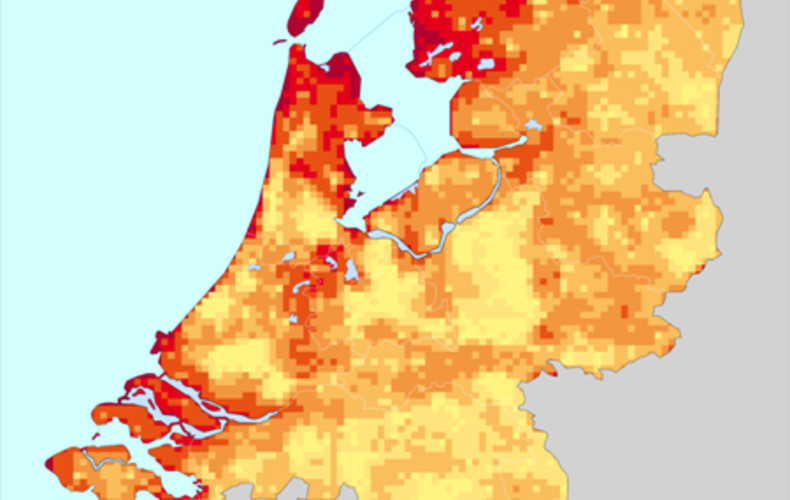
There are different ways of creating gridded maps from observations. The aim of
this study was to find an adequate method of producing interpolated maps of the
yearly and monthly climate normals of the surface wind speed at all grid points in
The Netherlands. Documenting the chosen interpolation method and providing the
scientific foundation for this choice are the other goals. The study is part of a larger
project within the KNMI to improve the interpolation of meteorological
measurements.
For 31 stations in the Netherlands, we had potential wind speed time series with 30
years of data (with at least 20 yearly and monthly averages) available as input for
our method. Using Wieringa’s two layer model of the planetary boundary layer
(Wieringa, 1986) the wind speed at the top of the boundary layer was calculated for
each location. At this height above the relatively flat Dutch landscape, the (“macro”)
wind flows freely, undisturbed by variations in the underlying surface roughness.
This makes it an ideal height for interpolating the wind speed. After interpolation,
surface wind speeds were calculated for all the grid values of the macrowind using
the two layer model and a map of the surface roughness of The Netherlands. The
method was refined by Verkaik (Verkaik, 2001).
The method is a five-step procedure:
Many aspects of the method were varied to improve the output map. For example
which stations to use and which not, the interpolation method, the size of the spatial
footprint used to determine the values of the terrain roughness and whether or not
to include roughness due to local differences in orographic height. In order to choose
the most adequate version of the method, we looked at two aspects: how well the
output compared to model and measured winds and how well the pattern of wind
speeds met the expectations of wind experts.
Our most adequate method makes use of the input data from all but one station:
the quality of the measurements at Geulhaven are too poor due to it’s unique
location in a built-up international port area. We used the inverse distance weighting
interpolation method with an IDP of 2. The local surface roughness was represented
by 2.5 km pixels and the meso- or regional roughness by 10 km pixels. Additional
regional roughness due to orography was not used.
Download de volledige publicatie.
A Stepek, IL Wijnant. Interpolating wind speed normals from the sparse Dutch network to a high resolution grid using local roughness from land use maps
KNMI number: TR-321, Year: 2011, Pages: 51